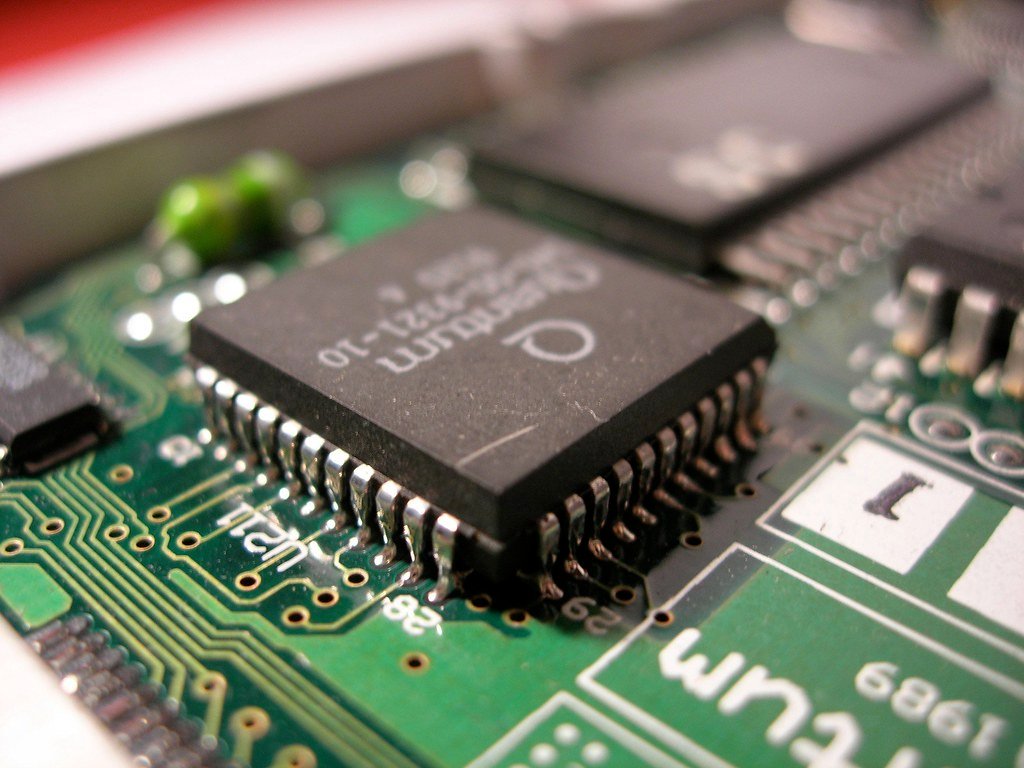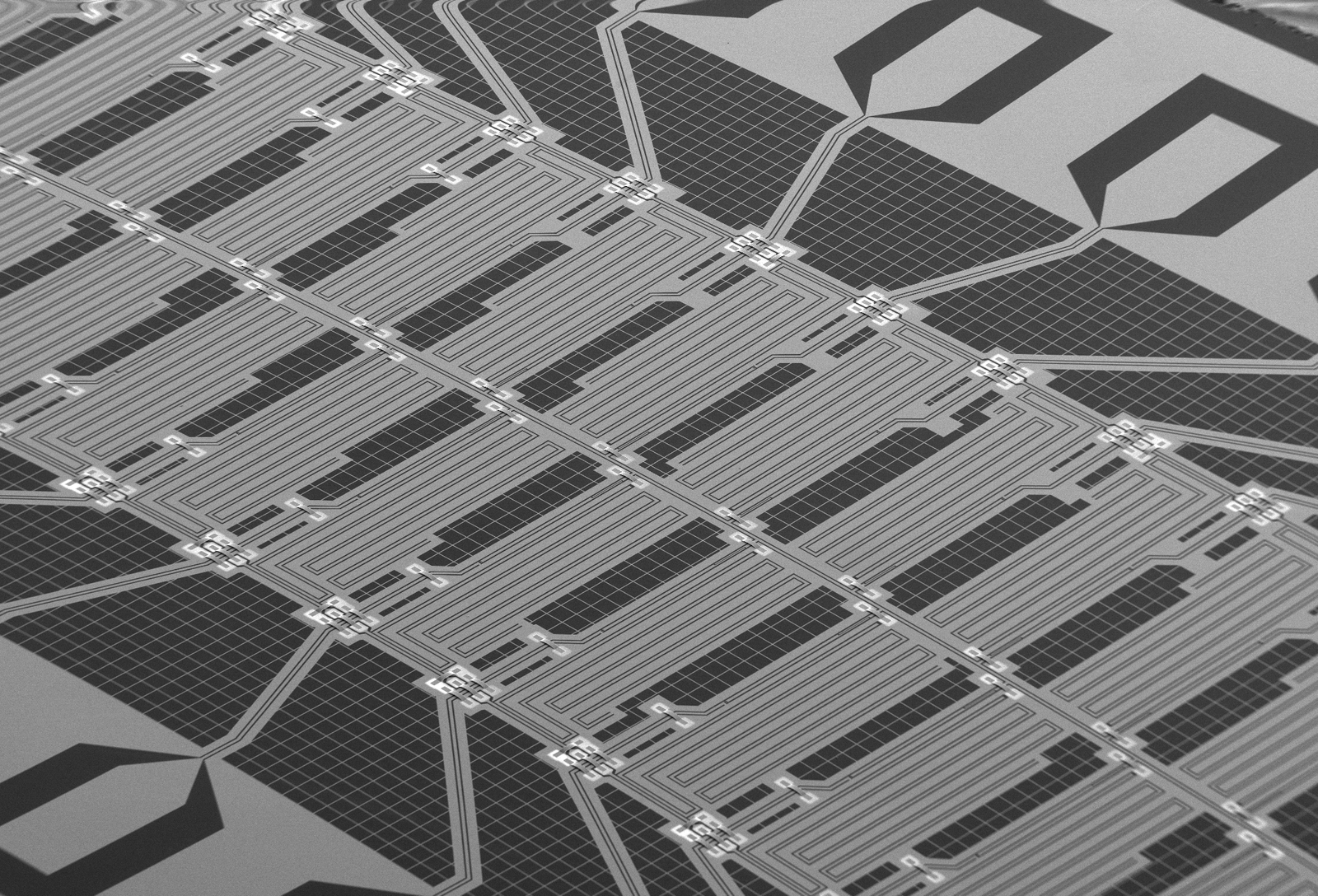The Quantum Revolution is Already Here – But in What Form?
Picture this: while you’re reading this article, quantum computers are already running calculations that would take classical supercomputers until the end of the universe to complete. Sounds like science fiction, right? Yet Google’s Willow chip performed a standard benchmark computation in under five minutes that would take one of today’s fastest supercomputers 10 septillion years. But here’s the catch – that mind-blowing calculation doesn’t actually solve any real-world problem. It’s like having a Ferrari that can only drive in circles on a test track. The big question isn’t whether quantum computers are fast, but whether they’ll finally start solving problems that matter to you and me in 2025.
Google’s Willow Chip Changes Everything – Or Does It?

Willow can reduce errors exponentially as we scale up using more qubits, cracking a key challenge in quantum error correction that the field has pursued for almost 30 years. Think of it this way: imagine you’re trying to have a conversation in a noisy room, and every time you add more people, the conversation gets clearer instead of more confusing. That’s essentially what Google achieved with Willow. They tested ever-larger arrays of physical qubits, scaling up from a grid of 3×3 encoded qubits, to a grid of 5×5, to a grid of 7×7 — and each time, using their latest advances in quantum error correction, they were able to cut the error rate in half, achieving an exponential reduction in the error rate. However, observers caution that achieving below‑threshold error correction is only one milestone on the path to practical quantum computing—further hardware improvements (lower physical error rates) and vastly larger qubit arrays will be required before industrially relevant problem‑solving is possible. Some experts note that Willow remains a research prototype within the Noisy intermediate-scale quantum era, still far from delivering the practical, fault‑tolerant performance required for real‑world applications. It’s like finally learning to ride a bicycle – impressive, but you’re still not ready for the Tour de France.
IBM’s Bold 4,000 Qubit Promise – Can They Deliver?

In 2025, IBM will introduce the 1,386-qubit multi-chip processor, “Kookaburra.” With its communication link support for quantum parallelization, three Kookaburra chips can connect into a 4,158-qubit system. The combination of these technologies — classical parallelization, multi-chip quantum processors, and quantum parallelization — gives us all the ingredients we need to scale our computers to wherever our roadmap takes. But here’s where it gets interesting – IBM isn’t just playing the numbers game anymore. IBM’s “100×100 challenge,” aims to utilize the 133-qubit Heron chip to solve a quantum circuit with 100 qubits and 100 quantum gate steps within a day, a feat not achievable by classical computers. It’s like comparing a Swiss Army knife to a machete – sometimes precision matters more than raw power. By 2025, IBM thinks model developers will be able to explore quantum applications in machine learning, optimization, natural sciences, and beyond. Yet the company’s own timeline suggests we’re still in the early innings of this game.
The Hybrid Revolution – Why Quantum Needs Classical Computers

In order to address real-world challenges, the quantum computers of 2025 will frequently collaborate with classical supercomputers. Major technology companies are making significant investments in hybrid quantum-classical platforms that integrate the advantages of both technologies. Picture Batman and Robin – quantum computers might be the superhero, but they need their classical sidekick to actually save the day. Amazon has announced a more comprehensive integration between its Bracket quantum cloud and NVIDIA’s CUDA-Q Quantum tools, facilitating workflows that seamlessly blend quantum processors with GPU-accelerated high-performance computing clusters. This isn’t just a technical necessity; it’s becoming the dominant strategy for 2025. Circuit knitting is a family of techniques that split quantum computing problems into chunks that can be run on multiple processors in parallel, before using classical computers to jump in to stitch the results back together again. In a proof of concept last year, IBM researchers showed that they could use a circuit-knitting approach called entanglement forging to double the size of quantum system that can be simulated on a given number of qubits.
The United Nations Declares 2025 the Quantum Year

The United Nations announced 2025 as the International Year of Quantum Science and Technology, reflecting the transformative impact quantum mechanics has had in the past century, and setting the stage for the next wave of quantum innovation. When the UN gets involved, you know something big is happening. The United Nations has designated 2025 as the International Year of Quantum Science and Technology, which isn’t just ceremonial recognition – it’s a signal that quantum computing has moved from the fringes of academic research to the center of global economic strategy. As we look toward the next 12 months, the pace of quantum research and development is only going to accelerate, making this a critical and catalyzing time for business leaders to act. As our industry looks toward the next 12 months, the pace of quantum research and development is only going to accelerate, making this a critical and catalyzing time for business leaders to act. The momentum is undeniable, but momentum doesn’t always equal immediate practical results.
Financial Services Lead the Quantum Charge

The financial industry is poised to become an early adopter of quantum computing. The financial industry is anticipated to become one of the earliest adopters of commercially useful quantum computing technologies. Money talks, and apparently it’s speaking quantum. Future applications of quantum computing may include finding new ways to model financial data and isolating key global risk factors to make better investments, or finding the optimal path across global systems for ultra-efficient logistics and optimizing fleet operations for deliveries. Banks aren’t known for taking wild risks with unproven technology, so their interest suggests quantum computing is approaching real utility. Quantinuum quantum computers have created true verifiable randomness in a project that could be valuable to cybersecurity. Classiq said it worked with Sumitomo Corp. and Mizuho-DL Financial Technology to successfully compress quantum circuits in implementing quantum algorithms for Monte Carlo simulations. When Japanese financial giants start experimenting with quantum Monte Carlo simulations, you know we’re getting close to something commercially viable.
The Error Correction Breakthrough Everyone’s Talking About
The Quantum Error Correction Era is here. We’ve seen increased global alignment on the necessity of QEC to remove faults in quantum computing and help achieve useful scale to drive the industry forward and make the technology’s transformative applications possible. Error correction might sound boring, but it’s the holy grail of quantum computing. Over the last 30 years, researchers have designed theoretical techniques which use many imperfect or low-fidelity qubits to encode an abstract “logical qubit”. A logical qubit is protected from errors and, therefore, has very high fidelity. A useful quantum processor will be based on many logical qubits. It’s like the difference between trying to hear someone whisper in a hurricane versus having a clear phone connection. In 2024, many quantum computing researchers and companies made great progress on quantum error corrections, including Google, QueRa, IBM and CSIRO. However, for now, developers have only made single logical qubits. It will likely take a few years to figure out how to put several logical qubits together into a quantum chip that can work coherently and solve complex real-world problems.
Quantum Computing Goes Mobile and Accessible
We’re also seeing quantum hardware break out of the lab – whether through mobile demo units or cloud-deployed annealers – making the technology more accessible. Quantum computers are no longer confined to pristine laboratory environments that look like something from a sci-fi movie. Multiple companies are designing interfaces so users might not need to know anything about quantum computers: Multiverse Computing’s Singularity uses a spreadsheet to abstract away whether it is using quantum or quantum-inspired computing to solve optimization problems. The Strangeworks model allows you to define your problem. Once you’ve done that, you simply select a solver — quantum or otherwise — and run it. Think of it like going from having to understand how a car engine works to simply pressing the gas pedal. QURECA offers customized training programs tailored to organizational needs, various roles, and different business sectors. MIT offers a two-course program from MIT xPRO that is designed for working professionals and awards a certificate. When MIT starts offering quantum computing certificates for working professionals, you know the field is maturing beyond pure research.
The Chemistry and Drug Discovery Connection
Quantum computing’s application in quantum chemistry has enabled the computation of single-point energies of large molecular systems with unprecedented accuracy. This advancement could accelerate drug discovery and materials design. Here’s where quantum computing might actually save lives sooner than we think. Quantum computers could help us discover new medicines and advance medical research by finding new connections in clinical trial data or genetics that current computers don’t have enough processing power for. Imagine being able to simulate how a new drug interacts with every protein in the human body before ever testing it on a single patient. This reduction decreased circuit complexity, resulting in lower error rates and faster runtimes, thereby accelerating chemistry R&D. The partners indicated that such circuit compression extends beyond chemistry, enabling early quantum applications in drug discovery, finance, and logistics. The pharmaceutical industry spends billions of dollars and decades developing new drugs – quantum computing could revolutionize this process.
Europe Makes Its Quantum Move
This year’s answer is not merely an unambiguous yes, but also a suggestion that it’s on the verge of taking the lead in the Global race to deliver practical quantum computing. The LRZ stats listed above are just one example. Europe isn’t content to watch from the sidelines as the US and China duke it out in the quantum race. In March 2025, IBM and the Basque Government announced their plans to install Europe’s first IBM Quantum System Two at the IBM-Euskadi Quantum Computational Center in San Sebastián, Spain. This initiative builds upon a partnership established in 2023 under the BasQ program, which aims to position the Basque Country as a leading technology hub. When regions like the Basque Country start positioning themselves as quantum hubs, it signals that quantum computing is becoming a legitimate economic development strategy. Don’t take Europe’s push for granted, as experts warn – the continent might surprise everyone with its quantum ambitions.
The Investment Reality Check

Pure play quantum stocks are hot but have cooled off a bit. Hyperscale cloud players are deadly serious about quantum as AWS, Microsoft Azure and Google Cloud all have credible efforts underway. The money is flowing, but investors are getting pickier about where it goes. Rigetti Computing and Quanta Computer said they will spend a combined $500 million to accelerate development and commercialization of superconducting quantum computing. The company also reported fourth quarter revenue of $2.27 million and 2024 revenue of $10.79 million. The net loss for 2024 was $200.99 million. These numbers tell a stark story – massive investments, tiny revenues, and huge losses. It’s the classic pattern of an emerging technology, but it also shows we’re still years away from quantum computing becoming a profitable business. IBM said it will spend $30 billion in R&D in the US as part of a broader $150 billion spend. That R&D in part will be devoted to quantum computing.
The Cybersecurity Elephant in the Room
Google’s new quantum chip’s speed and accuracy could theoretically provide hackers with the tools to unlock the algorithms that bitcoin and other cryptocurrencies are built upon. Let’s address the digital elephant in the room – quantum computers will eventually break most of our current encryption. A Google spokesman told CNBC that the Willow chip is incapable of breaking modern cryptography, adding that it is also the view of Google that quantum technology with that capability is still years off. But “years off” in quantum computing can mean anywhere from five to twenty years, which isn’t exactly comforting if you’re managing digital security. The crypto industry is working on “quantum-safe” crypto. The National Institute of Standards and Technology has released several quantum-safe algorithms that are resistant to attacks by future quantum computers, and NIST has a timeline for governments and industry to deploy these algorithms to ensure the safety of the nation’s and businesses secrets. The race between quantum computers that can break encryption and quantum-safe encryption that can resist them will be one of the defining technological battles of the next decade.
What 2025 Really Means for Practical Quantum Computing
It feels like quantum computing is turning an important corner, maybe not the corner leading to the home stretch, but likely the corner beyond the turning back point. We now have quantum computers able to perform tasks beyond the reach of classical systems. Google’s latest break-through benchmark demonstrated that. These aren’t error corrected machines yet, but progress in error correction is one of 2024’s highlights. So here’s the honest truth about 2025: it won’t be the year quantum computers replace your laptop, but it might be the year they start solving real problems that matter. Quantum computing in 2025 is getting real traction, with applications emerging across energy, pharmaceuticals, and finance. Hybrid systems combining quantum and classical tools are unlocking early results, while encryption upgrades are taking center stage as the technology inches closer to real-world impact. In a business decision-maker study, 12% said their organizations were prepared to assess quantum opportunities. Clearly, there is an urgent need for leaders to get more information and better understand how technical advancements in quantum will enable real-world impact. The gap between quantum hype and quantum reality is finally starting to close, but we’re still building the bridge between the two sides.
What would you have guessed – that 2025 would be the year quantum computers finally graduate from impressive lab demonstrations to solving problems that actually change how we live and work?

